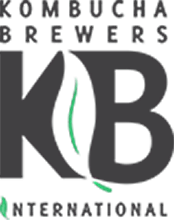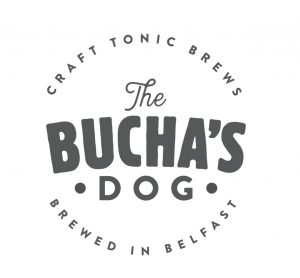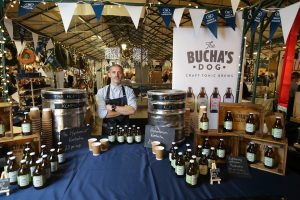What is Proposition 65?
The Safe Drinking Water and Toxic Enforcement Act was approved by California voters in 1986 and is known today as Proposition 65 and requires the State of California to publish a list of chemicals and substances known to cause cancer or birth defects or other reproductive harm. Proposition 65 is administered by the Office of Environmental Health Hazard Assessment (OEHHA). OEHHA has listed over 900 chemicals, including naturally occurring and synthetic chemicals present in foods, beverages, pesticides, commonly used household products and personal care products, and more. Proposition 65 is a right-to-know statute; it does not prohibit businesses from selling anything in California. Rather, it requires businesses to provide a “clear and reasonable” warning to Californians before knowingly and intentionally exposing them to a listed chemical or substance. A warning must be given for listed chemicals and substances unless exposure is low enough to pose no significant risk of cancer, or is significantly below levels observed to cause birth defects or other reproductive harm.
Proposition 65 And Alcoholic Beverages
OEHHA listed alcohol under Proposition 65 over two decades ago, first listing “ethyl alcohol in alcoholic beverages” as a reproductive toxicant in 1987, then “alcoholic beverages when associated with alcohol abuse” as a carcinogen in 1988, and most recently, “alcoholic beverages” as a carcinogen in 2011.
Safe Harbor Levels
For chemicals listed as carcinogens, the “no significant risk level” (NSRL) is defined as the level of exposure that would result in not more than one excess case of cancer in 100,000 people exposed to the chemical over a 70-year lifetime. For chemicals listed as reproductive toxicants, the “no observable effect level” is determined by identifying the level of exposure that has been shown to not pose any harm to humans or laboratory animals. This number is then divided by 1,000 to establish the “maximum allowable dose level” (MADL). OEHHA has established NSRLs and MADLs known as “safe harbors” for some, but not all, of the listed chemicals. If your product contains a Proposition 65 listed chemical at levels below the established safe harbors, you do not need to provide a warning.
No Safe Harbor Guidance For Alchohol
OEHHA has not established safe harbors for any of the Proposition 65 alcohol listings. Businesses that expose individuals to a Proposition 65 listed chemical that does not have an established safe harbor must either provide a Proposition 65 warning or must show that the exposure level will not pose a significant risk of cancer or reproductive harm. Determining the anticipated exposure level is not a simple endeavor and often requires an expensive scientific exposure assessment.
How to Warn
Although most manufacturers may apply Proposition 65 warnings directly to product labels, this is not the case for alcoholic beverages. Why? All alcoholic beverage labels must be approved by the Federal Alcohol & Tobacco Tax and Trade Bureau (TTB) and contain the federal warning on the products. The federal warning is not the same as—and is not compliant with—the Proposition 65 warning requirements and thus does not provide a safe harbor under California law. The above warning does not apply to non-alcoholic beverages. For retail sales of alcoholic beverages in stores, businesses may warn by (1) posting the above warning on an 8 ½ x 11-inch sign in at least 22-point font, placed at eye level so it is conspicuous to customers upon entering the area where alcoholic beverages are sold, or by (2) posting the above warning on a 5 x 5-inch sign in at least 20-point font, placed at each retail point of sale or display so it is conspicuous to customers. For alcohol provided for consumption on-premises, or sold over-the-counter, the above warning language must be provided on the drink menu. For alcohol sold or distributed within California through delivery services, a warning must be placed on or in the shipping container/delivery package, in a font at least as big as the rest of the text on the package
Proposition 65 and Non-Alcoholic Beverages
While Proposition 65 is nothing new for the alcoholic beverage industry, Proposition 65 private enforcers have recently targeted traditionally non-alcoholic products based on the alcohol-related Proposition 65 chemicals. Several kombucha retailers and manufacturers have recently been served with notices of violation based on alleged exposure to “ethyl alcohol in alcoholic beverages” and “alcoholic beverages.” In many cases, kombucha is not produced or marketed as an alcoholic beverage, but trace amounts of alcohol may result from the fermentation process, none of which are knowingly or intentionally added to the product before sale. Proposition 65 does not define an alcoholic beverage. Rather, it is defined in the Alcoholic Beverage Control Act as containing 0.5% alcohol by volume or more. See CA Bus. & Prof. Code § 23004. It is yet to be seen how the plaintiffs’ bar will attempt to tie the 0.5% ABV definition to Proposition 65, a potential safe harbor level, or the risk of cancer or reproductive toxicity. In the meantime, it is important to have a comprehensive compliance program in place with regular product testing.
Have you received a Prop 65 Notice? Email info@kombuchabrewers.org for guidance & support (membership not required)
References
https://www.p65warnings.ca.gov/products/alcoholic-beverages



